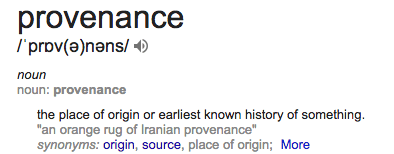A few months ago I posted this video to my blog.
Some people tell me that studying art history from a feminist point of view is pointless. That it’s irrelevant. What’s the point of writing about art history with a feminist slant when it’s so detached from what goes on around us on the street.
It’s not.
Everything has provenance.

I like the word provenance in this context. It’s other meaning is:
The chronology of the ownership, custody or location of a historical object.
The ownership or custody… It kind of sums up the whole problem really. While attitudes towards women are gradually experiencing a counter-cultural revolution there are still many people who still have this outdated mindset. That women are there to be owned.
This is the kind of day to day problem that we’re all very used to hearing about. Popular feminist campaigns regularly make the news, everything from Laura Bates and the Everyday Sexism Project to No More Page 3. I’m an avid supporter of both (and more). But this isn’t what I deal with when it comes to my academic interests.
I’m interested in the way that women have been treated historically. I personally mostly enjoy studying art post 1900 and seeing what it can tell us about women in society and the attitudes towards them. In fact I’m currently working on an essay with the title ‘Analyse the way in which gender has affected the interpretation and status of British women artists of the mid twentieth-century.’ And their status was indeed affected by their gender, as well as the way that we interpret their work. Remember it was only eighty six years ago that women gained even the most tenuous sign of equality – the right to vote.
I like investigating the way that women (and LGBT artists, and artists of colour) have been treated in the past and getting down to the roots of patriarchal behaviour. I like examining how (or if) people tried to change attitudes and how the world responded to that. I like discovering work that isn’t considered canonical and questioning why it was not an acclaimed work. I like understanding the struggles that these artists faced.
Because I believe that it’s only in understanding our past that we can influence our future. By knowing where we have come from we can understand the journey ahead of us. If we understand the things that we tried in the past and the effect that had on society we can make plans to change the future.
But why art? Why not politics? Or history?
Because art parallels society. It is influenced by the world around it and often it will influence the world. It is a distilled journal of the world in visual form. You can look at a work of art and read the circumstances that caused it’s creation, what drove the artist to create that form. It’s just another form of historical source, except that you need different skills to understand and interpret a work of art compared to a written journal or diary.
It’s more than that though. When you look at a written source you have to believe that the author was being true to their words. You only have the words. However with an image, you see how the artist saw the world. It’s very hard to fake an imagine convincingly and convince the audience that you think something that you do not. You can see how society treated women from the artists status but also from the way that people are portrayed within the images themselves.
It’s fascinating. And I plan on changing the world. But to change the world I have to understand how much it has already changed. There’s an awful lot to understand.

![[no title] 1985-90 by Guerrilla Girls null](http://charlottesometimes.co.uk/wp-content/uploads/2014/09/P78793_10.jpg)



